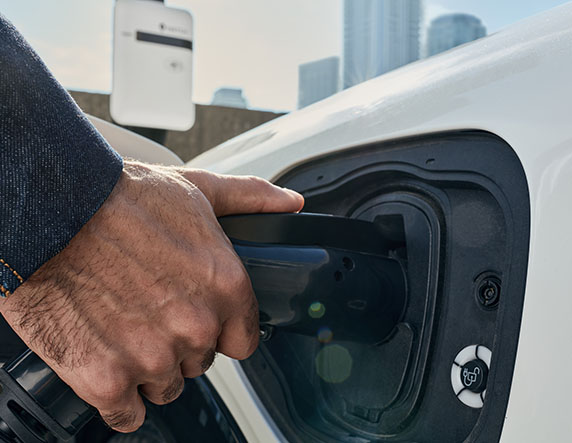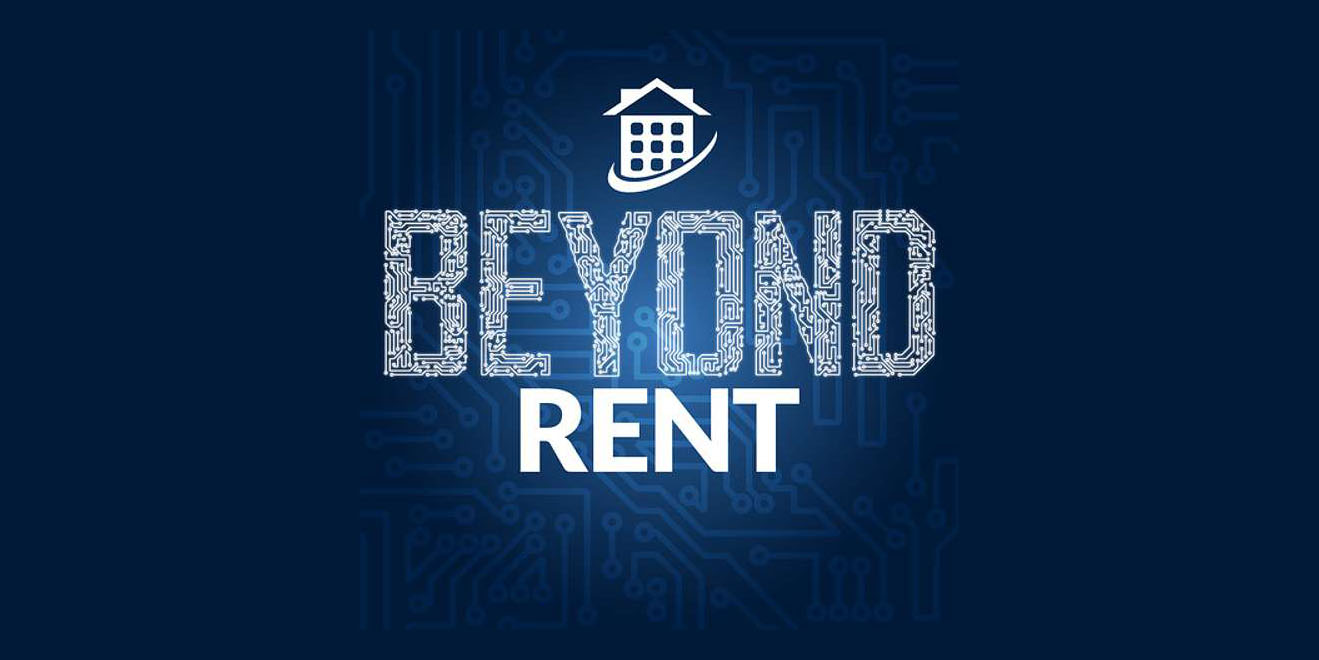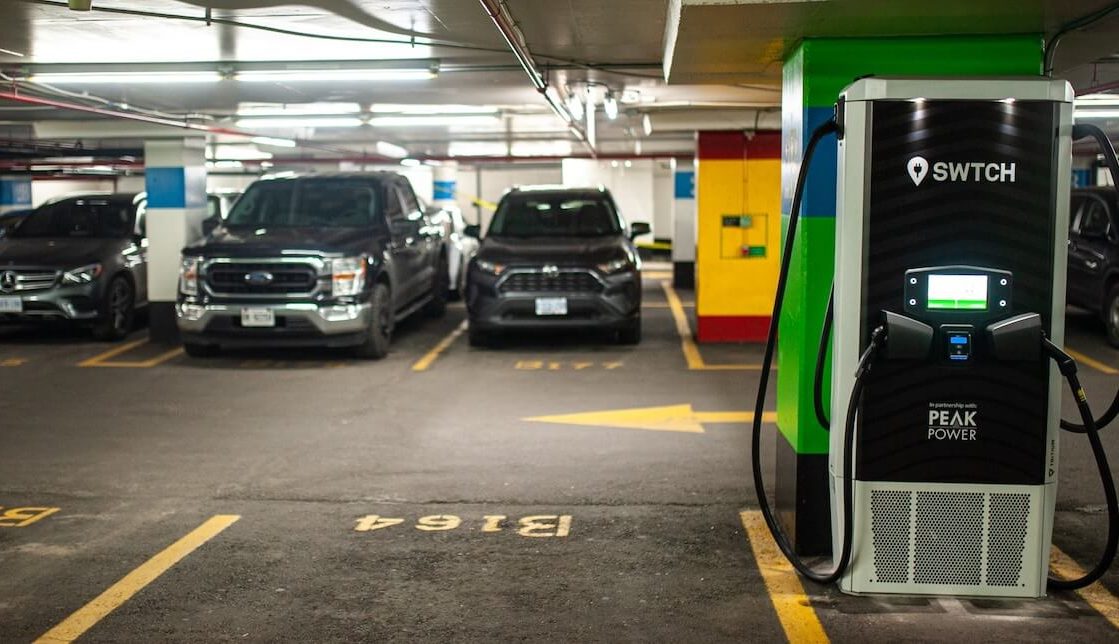Private vs. shared multifamily EV charging: Making the best choice for your tenants and your business
As more residents of multifamily properties purchase EVs, demand for on-premises charging at apartment and condo complexes is rising. The good news? There are several different ways property owners can install EV chargers to meet the needs of their specific tenants and properties.
One significant decision to make early on centers on whether to install shared chargers for all EV drivers in the building or chargers for private use by individual tenants.
Each choice comes with pros and cons for tenants and for property owners. Ultimately, striking the right balance between resident satisfaction and installation cost—or just working with the realities of your building—ought to dictate which option you select.
Here’s what you need to know about both options in order to make an informed decision.
Quick primer: Multifamily EV charging basics
We’ve created an extensive guide to EV charging for multifamily properties that you can consult here, but here are some fast facts worth knowing when discussing private vs. shared chargers:
- Though there are three levels of EV charging, it’s level 2 charging that is considered ideal for multifamily properties.
- With level 2 charging, it’s possible for a battery to go from a fairly low state of charge to fully charged within hours (anywhere from 5-12 hours, depending on the vehicle and the precise state of charge).
- A level 2 charger typically requires a dedicated 40 amp circuit, though load management technology from companies like SWTCH can share a single circuit across four chargers.
Learn more about charger options & associated technology
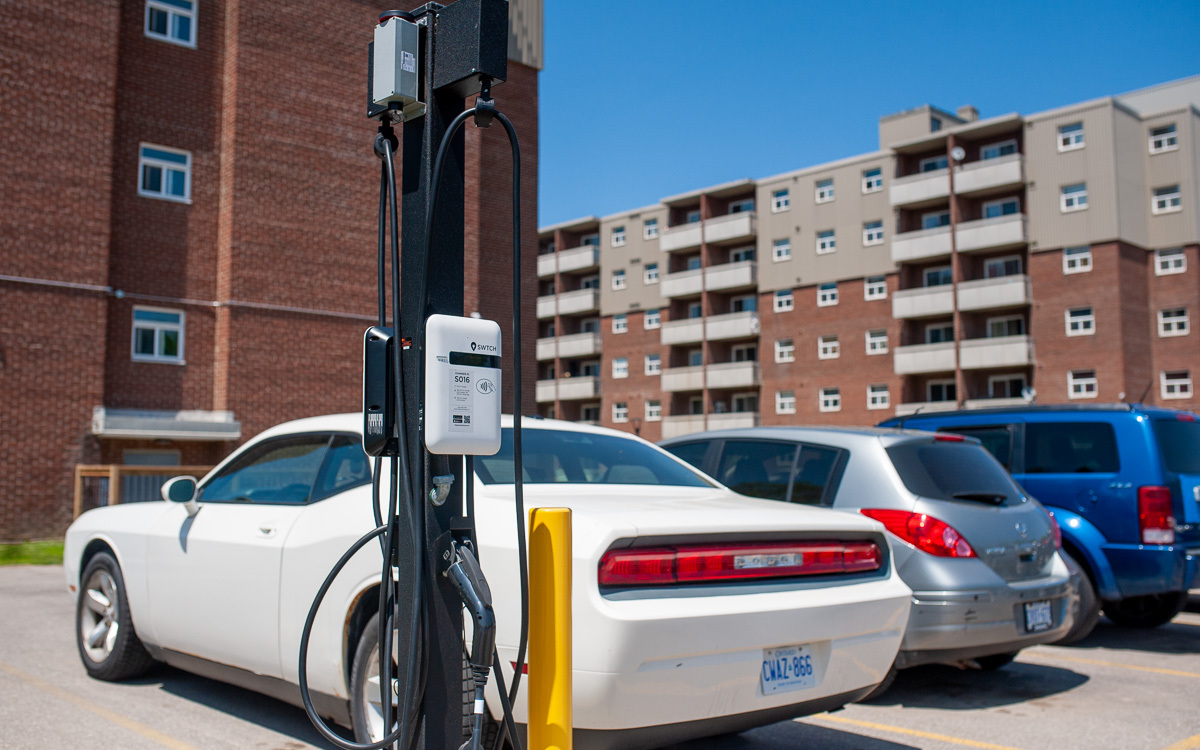
Potential challenges for multifamily EV charging
It’s also worth acknowledging a few common challenges for EV charging in multifamily environments, as these can also influence the decision between private and shared chargers.
- The building’s electrical capacity: Generally, older multifamily properties were not built with on-premises EV charging in mind. Without electrical upgrades, they tend to have limited capacity for chargers to be installed.
- The existing parking arrangement: Some installations for EV charging may necessitate changing how parking access is managed for some or all of your residents—hardly an insurmountable problem, but something to consider.
- Safety and accessibility: Your chargers must be installed in such a way as to not only be safe, but also adhere to accessibility requirements in place through laws like The Americans With Disabilities Act and similar regulations specific to your state, province, or country.
Avoid these pitfalls: The 7 most common mistakes made with multifamily EV charging
Pros and cons of shared EV chargers for multifamily properties
“Shared” EV chargers are EV chargers that are installed in a multifamily property’s parking area and are made available to any tenants (and possibly guests) who have an EV and would like to charge up.
Advantage: Lower cost
Electrical upgrades can be expensive, and the thinking behind having shared EV chargers is generally to install fewer chargers than the total number of EV drivers in the building, with drivers simply plugging in on whatever days they happen to need to charge up.
You can save on the cost of electrical upgrades, EV chargers, and related expenses by going this route.
Additionally, with shared chargers, it’s easier to concentrate your chargers in a parking stall or spot nearer your existing electrical infrastructure, further reducing potential costs related to running cables and conduit farther into your facility.
Advantage: Easier management and maintenance
Though multifamily EV charging solutions can be quite reliable, there is occasional maintenance required for chargers, as well as ongoing management requirements to ensure they are working correctly.
By having fewer chargers, your efforts in these areas will be more concentrated and likely easier to manage.
See a great shared charging example: The Lofts at Beacon
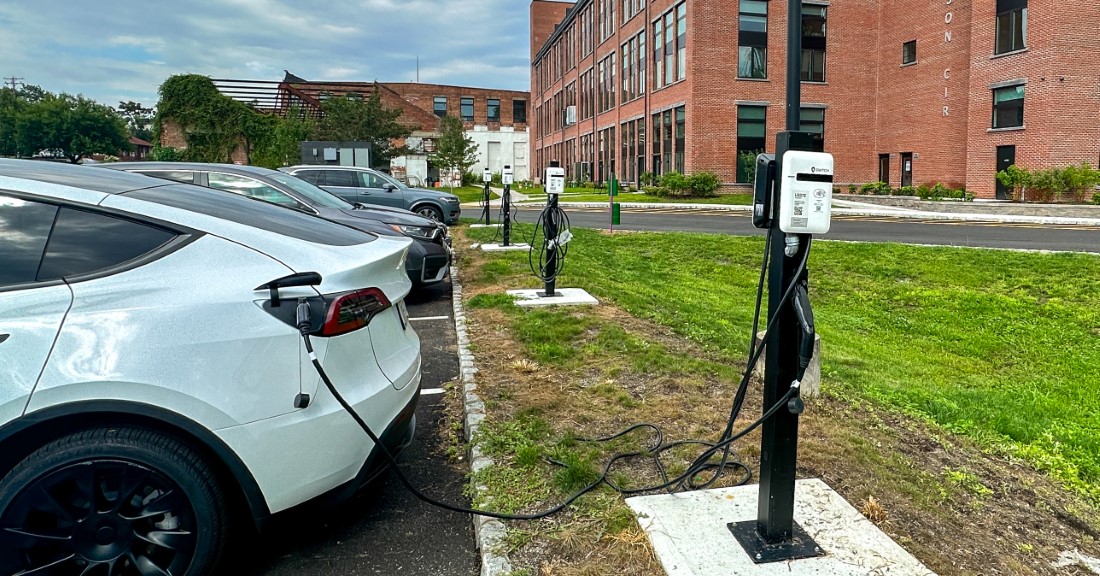
Disadvantage: Potential for conflicts over access
With shared chargers, there’s potential for frustration if people can’t charge up at home when they want or need to.
Causes for this could be as simple as multiple people needing to charge at approximately the same times each day or week, one-off instances where a driver desperately needs to recharge at home and finds a charge is taken, or some users making disproportionate use of the chargers.
Implementing a booking system or using a software system that can apply loitering penalties could help.
Another option is to simply have discussions with tenants to try to reach an understanding in cases where specific individuals appear to be at the root of the issue. But still, there’s a chance that shared chargers could actually produce conflict, and it’s something to account for when planning.
Disadvantage: Potential for more frequent maintenance required
As with anything, the more an EV charging station is used, the likelier it is to require more frequent maintenance. Assuming a shared charger has higher overall usage as compared to a private charger, it’s likely that it will need to be serviced more frequently than a charger reserved for private use by a specific tenant.
Bear in mind that it’s not just (or even primarily) the internal components of a charging station that are likely to require maintenance. Cables, connectors, and other hardware that tenants are likely to interact with can easily be mishandled, likely accidentally.
Disadvantage: Higher upfront costs (but with NOI & ROI upsides)
With shared chargers, the building management purchases the hardware and pays for installation and ongoing network fees, maintenance, the EV charging software, etc. This will represent a higher cost than typical private charger arrangements, where some or all of these costs will be paid for by the tenants.
That said, with this cost comes opportunity, as you will be able to dictate the cost to use the EV chargers, which could not only help pay back the on-going and installation costs, but could contribute to your NOI (and make an ROI over time).
Pros and cons of private EV chargers for multifamily properties
Private EV chargers are chargers reserved for use by a specific tenant. Installed at a reserved parking space, the expectation is that they will only be used by the tenant to which they belong, or possibly by occasional guests staying with that tenant.
Advantage: Always available when tenants want them
Where the primary disadvantage of a shared charger is the potential for inconsistent access, no such issue should exist with a private charger. Whenever the tenant wants, they plug their car in at their parking space and can count on their car being charged up when they next go to leave.
Advantage: Generally require less maintenance per charger
Because it’s a single driver or family using a private charger, it’s less likely that chargers will see heavy daily use, with cables being moved or dragged around and connectors latching and unlatching from vehicles several times per day.
You’ll likely require more private chargers to accommodate the number of EVs at a property than you would with shared chargers, so the overall maintenance costs and frequency of repairs may not be that different, but each individual charger should fare better.
See a great private charging example: Onni East Village
Disadvantage: Unequal access to charging could cause resentment
The primary benefit of private chargers—exclusive access for individual tenants—can also become a liability as more drivers start to drive electric.
Tenants who don’t have an EV today may not want a charger installed for themselves, but if they buy an EV two or three years down the line, they might demand one get installed for themselves. Depending on the state of the electrical infrastructure, this might require upgrades that you are unprepared to make at the time.
In the end, the result could be that tenants with EVs may not be able to have their own at-home chargers and become resentful that there are others in the building who do.
Disadvantage: Can come at a higher cost in some circumstances
Unsurprisingly, if you have multiple EV drivers who live at a multifamily property and they each need a dedicated charger, it costs more money to purchase that hardware, pay for installation, and pay for any necessary electrical upgrades than it would cost to simply install one or two chargers to be shared. If your business is taking on these costs alone, private chargers may prove more expensive.
However, it’s common to arrange things so that costs for upgrades, EV charger hardware, etc. are paid for (in part or in full) by the tenants themselves. In arrangements like this, opting to go with private chargers can actually be less expensive for your business.
Factors to consider when choosing between private and shared chargers
In addition to the points above, there are a few other factors that can influence the type of charging arrangement you eventually install.
Here are some of the most important ones.
The budget you can devote to the project
Money is not infinite, and the cost of chargers, installation, electrical upgrades, and other expenses related to a new EV charging offering can accumulate fairly substantially.
Ultimately, regardless of the other details you’re accounting for, you can only afford to pay what you can afford to pay. You may find that installing a lower number of shared EV charging stations is the only option available to you at the start of your EV charging journey, rather than outfitting a large number of spots with chargers for private use.
Note, however, that there are a large number of funding programs available to help multifamily properties outfit themselves with EV charging infrastructure. Be sure to take advantage of these programs, either to drive down the cost of your intended project or to allow yourself to install more chargers and produce a better experience for your tenants and guests.
You can find information about some of the most prominent incentive programs here.
For personalized assistance finding the best programs for your area, please reach out to our team! We’ll be happy to help.
The number of EV owners at your building (and those likely to buy soon)
Demand for charging at your building could be an important factor in the decision between private and shared chargers.
Do you only have two people in the building who either own an EV or intend to buy one in the near future? You might find private chargers are the way to go. Does everyone in the building have an EV or intend to get one soon? Budget constraints will probably mean you need to go with shared chargers (at least to start).
Poll your residents to get a sense of their immediate or near-term at-home EV charging needs, and make the information you get a part of your decision-making process if you can.
Local regulations around EV readiness
Increasingly—particularly for new builds, but occasionally for retrofits—there are requirements around readying multifamily properties to be able to deliver EV charging to tenants.
You’ll want to double-check any regulations that would apply to your building to ensure that any decisions you make around installing EV chargers are made in accordance with these requirements.
A great EV-readiness example: ASPAC Development Ensures 574 Parking Spots are EV Ready at River Green

Additional options: Phased approaches and mixed models
It’s worth keeping in mind that the decision you make when first installing EV chargers doesn’t have to be forever, or even fully one option over another.
By planning a gradual shift or even installing chargers that come with different access permissions, you may be able to strike a better balance for your team and your tenants.
Here are a couple of possibilities to consider.
Start with shared chargers and work toward private chargers down the line
You may not want to drop the full amount required to install enough private chargers to meet the demand in your buildings today—but over time, by adding to the number installed every year or two, you could get there.
So consider installing shared chargers to start—enough that your tenants have a decent charging experience, but few enough that the expense feels more manageable to you. Then, just keep adding until you hit whatever target number is right.
Generally, it’s most efficient and cost-effective to conduct electrical upgrades sufficient to handle your eventual final charger count, so that part is still worth doing all at once. But beyond that, there’s nothing stopping you from rolling out chargers on whatever schedule you feel is best.
Just a note: You’ll likely find it’s worth communicating your strategy + a vague timeline to your tenants. The ones who rely on your chargers will probably be pretty excited.
Install a hybrid offering that combines private and shared chargers
Another option available to you is to simply not choose between private and shared chargers—you can host both at your property.
Assuming that doing so works for your situation, you can roll out private chargers to as many of your EV-driving tenants as you can—or who want a private charger —and then install one or more additional chargers for shared use.
Typically, this strategy involves structuring charging session fees a little differently across the different charger types.
With private chargers, it’s normal to charge a monthly access or deed fee to the tenants who will have access, and then have an additional small fee attached to individual charging sessions.
With shared chargers, there is usually no access or deed fee, but the fees per charging session are generally a bit higher.
The goal with these fees is to help pay back the cost of your hardware, software, upgrades, etc., and even to allow you to start generating a profit once your costs are recouped.
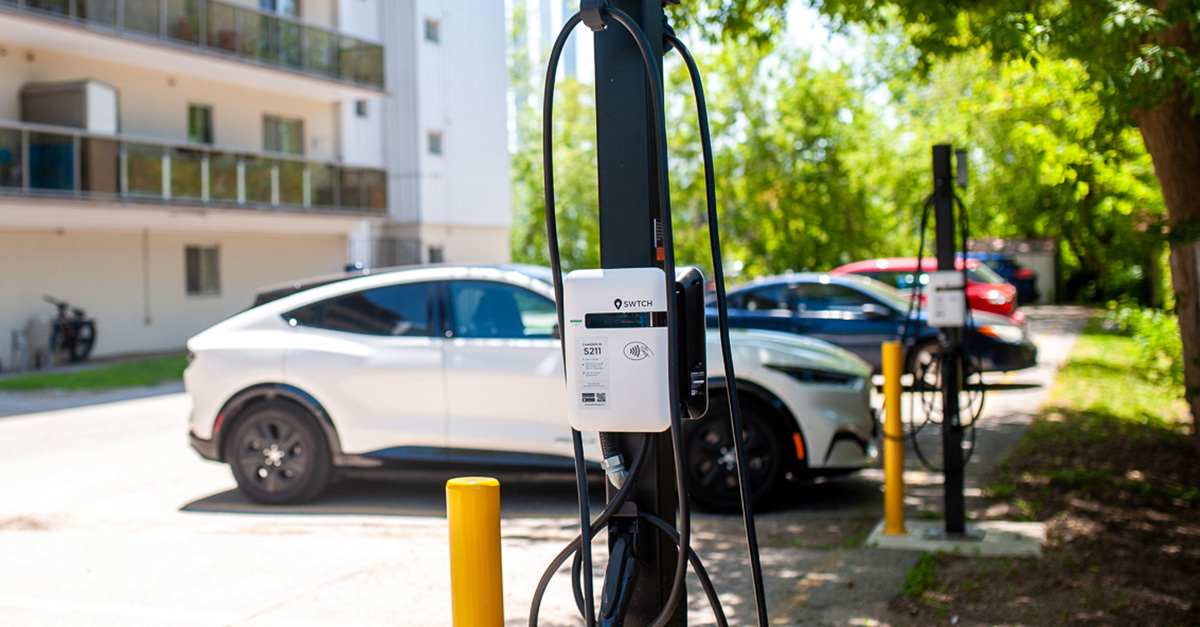
Though tenants generally prefer private chargers over shared charging arrangements, there is no right or wrong approach. Truly, most tenants will be very glad to have any sort of charging available for them at home at all.
Consider carefully the pros and the cons, taking into account both the tenant experience and the costs to your organization of each kind of charger installation, and choose whichever seems like the best fit.
As we said, there’s nothing stopping you from changing your approach down the line if circumstances change or you find that your initial decision isn’t working as well as you had hoped.
Want help figuring out the best charger arrangement for your multifamily property?
Contact our team today!
